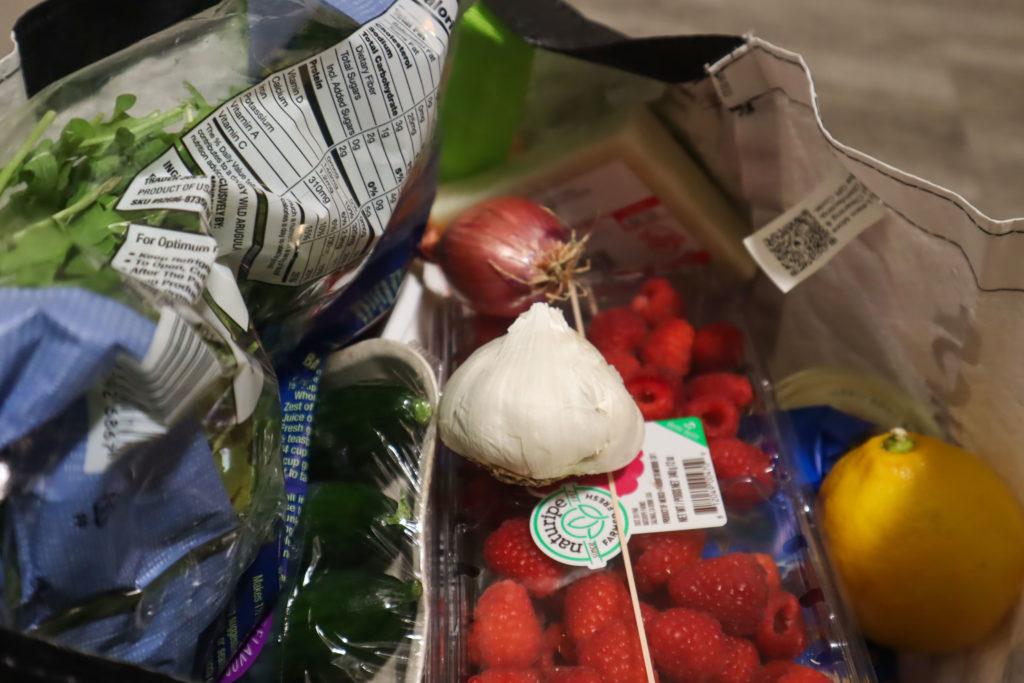Inflation in grocery stores across the country is pushing students out of campus supermarkets like Whole Foods in hopes of dodging heightened food prices.
A dozen students said they’re visiting more affordable stores off campus, like Safeway and Target, and avoiding items that have soared in price over the past month, like poultry and eggs. Students said the University should funnel more dining dollars into students’ accounts and add more GWorld vendors to its dining network in an effort to pad students’ budgets in response to the price inflation.
Food prices increased by 10.4 percent from 2021 to 2022, according to the Consumer Price Index, an uptick from the 6.3 percent change in food prices from 2020 to 2021.
The avian influenza, which killed 43 million egg-laying hens across the country this fall, sparked the inflation of items like eggs – which skyrocketed to $4.25 per dozen in December 2022 from $1.79 a year prior. Butter prices spiked 27 percent in the final months of 2022 due to a decline in the milk supply, and flour prices jumped by 24.9 percent as a result of Russia’s invasion of Ukraine, which has heightened the cost for grains and fertilizers.
Ethan Fernandes, a freshman studying international business, said he and his friends noticed prices for items like lettuce doubled or even tripled this month on grocery delivery services like Instacart. Fernandes said he is focusing on the essentials like produce while shopping, cutting back on extra snacks and cooking less often while relying on other campus vendors who accept GWorld.
“There’s some stuff that is just unavoidable like, for example, eggs,” Fernandes said. “But for sure, supplemental stuff that I would usually buy, like snacks, I’ll probably cut down on because of the price so I could buy the essentials.”
President Joe Biden launched an anti-inflation plan last May to combat rising food prices, aiming to aid U.S. farmers in boosting domestic food production, target illegal price fixing and provide more than one billion dollars in relief to small businesses and agricultural workers.
Emily Tyler, a senior political science major, said egg supply shortages have driven up her grocery bill, and during her most recent shopping trip to Whole Foods, the only eggs available cost her $12.
“The off-brand they usually carry was not there,” Tyler said. “I think prices have gone up, and I also think it was the brand, specifically the organic eggs, like $12 to buy a larger thing,” Tyler said.
Tyler, who typically buys her groceries with dining dollars, said she wishes more grocery stores like Trader Joe’s would accept GWorld so more alternatives to groceries with inflated prices would be available. She added that officials should raise students’ dining balances so they can navigate higher prices.
“I think the more places we have available, that makes it a better place to compete to have the lowest price and give people more options,” Tyler said.
Dining officials announced last spring that the I Street Whole Foods would no longer accept GWorld as a form of payment beginning at the end of the 2022-23 academic year as part of a “corporate decision” to phase out the grocery chain from University dining plans. The University’s rollout of its new dining system this semester lowered the share of dining dollars that students could spend on groceries and other campus vendors as officials added meal swipes for a slate of newly opened campus dining halls.
Adriano Grassi, a freshman studying political science, said he has been grocery shopping less often since the start of the semester, especially at Whole Foods, because of the higher prices. Grassi said he tried traveling to Target in Rosslyn or Safeway in Georgetown to find more affordable options.
“I’m having to shop there a lot less, which sucks, because I’m going to have to spend my own money at Target or go all the way up to Safeway, which I don’t think many people do,” Grassi said.
Anna Razvi – a sophomore and the president of the The Store, GW’s student-run food pantry – said due to higher grocery prices, the organization spends most of its funding on “high-demand” grocery items like eggs and dairy, now relying on donations for hygiene items like shampoo and tampons from students. Razvi said student leaders have seen higher demand from graduate students within the past year.
“We’ve been fortunate to have members of the GW community continuously donate food and personal hygiene items, as well as donations from Amazon Fresh and Panera, to help us keep pace with the demands of students,” Razvi said in an email.
Sam Nubile, a freshman political science and criminal justice major, said he started shopping at Safeway instead of Whole Foods this semester in response to the escalated grocery prices despite the “35-minute bus ride” the trip adds to his schedule each week. He said he is trying to take advantage of the Safeway rewards program, in which subscribers earn points to exchange for discounted or free items, and spending coupons to save his GWorld balance.
The University started providing weekly shuttle services to Safeway in December, departing from Funger Hall every 40 minutes between noon and 4 p.m. each Saturday.
Nubile said he pulled back on cooking this semester, which used to be a “passion” for him, because of the higher grocery prices. He instead relies on the dining hall or other GWorld vendors for meals. Nubile said he enjoyed cooking dishes like chicken parmesan for dinner and using the leftovers for lunch throughout the week, a routine that’s now too expensive for his budget.
The price of chicken increased by 12 percent between October 2021 and 2022, a phenomenon caused by high consumer demand and an increase of production costs.
“The chicken, sauce, the pasta now is like 20 to 25 dollars,” Nubile said. “At that point, I go to the dining hall for swipes that’s been unlimited.”










